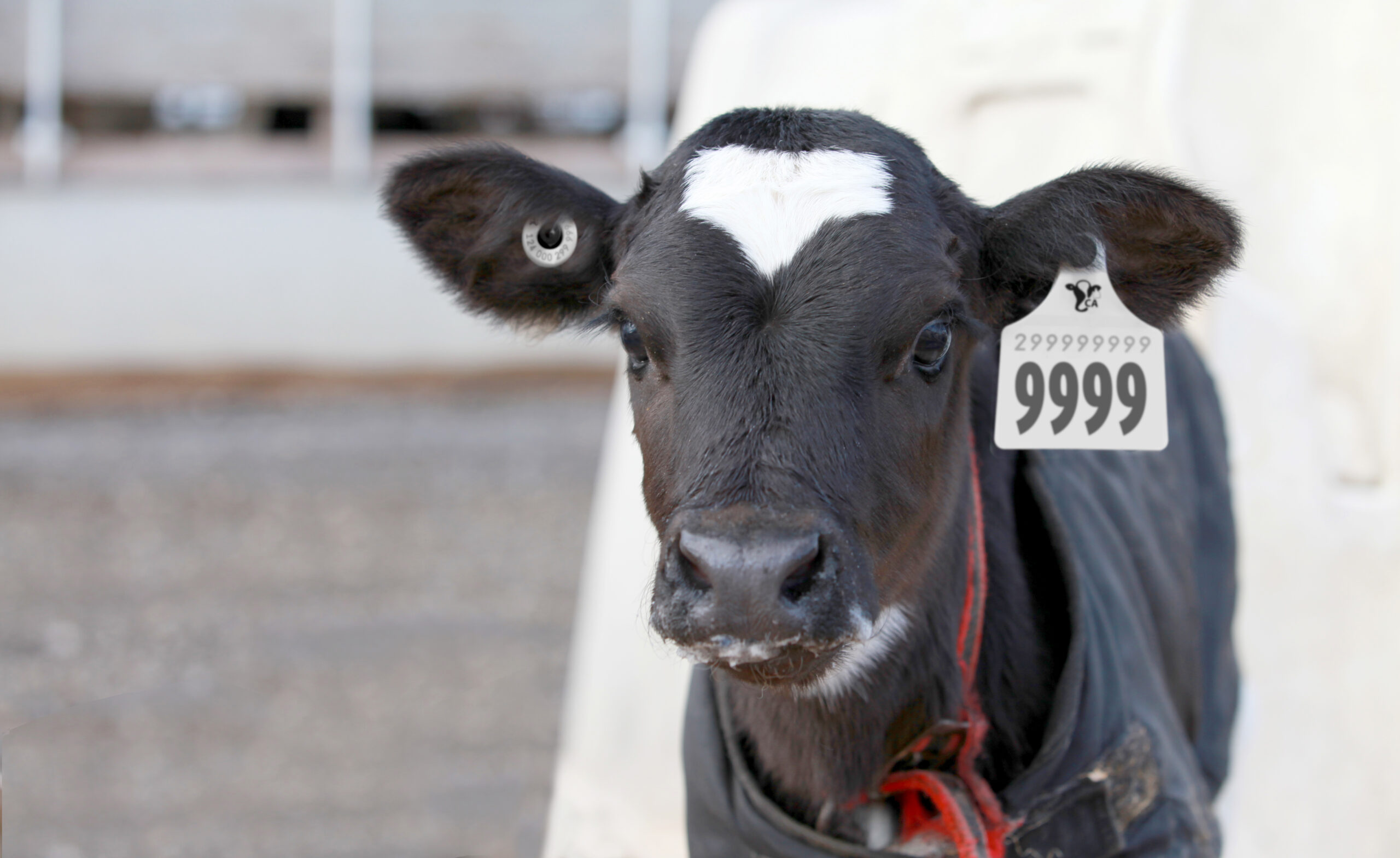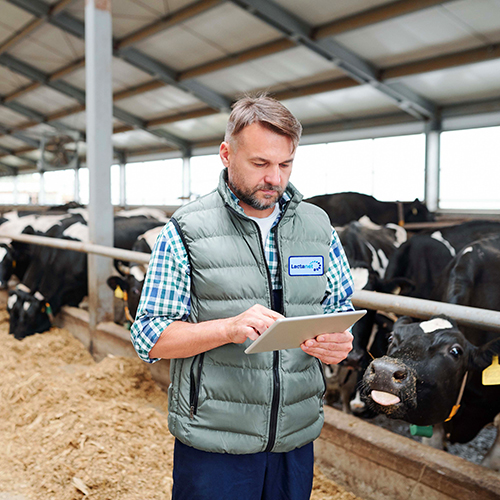A Producer’s Perspective on Research
Some might say it takes a unique farmer with a keen interest in advancing the dairy industry to welcome researchers on their farm. JP Brouwer of Sunalta Farms is one such person, farming with his three brothers and their parents in Ponoka, Alberta. Each brother takes care of a different subset of tasks, which allows JP to dedicate time and energy to research projects.
Sunalta Farms began contributing and collaborating with researchers nearly 15 years ago, having now been involved in over 25 different projects. Such projects include the international Efficient Dairy Genome Project (EDGP), the Resilient Dairy Genome Project (RDGP), and two complementary Alberta funded projects: “Application of Precision Technology for Resilient Cows: Enhancing the sustainability of Alberta’s dairy industry” funded by RDAR and “Application of Methane Sniffer Technology for Dairy Cattle” funded by the Agriculture Funding Consortium and Alberta milk. For each of these projects, Lactanet has been the primary dairy industry partner.
We sat down with JP to learn about his unique perspective on research and his involvement with these projects.
Q: What first inspired Sunalta Farms to contribute to research?
JP: Research is how our industry advances, so it’s a no-brainer to engage in it. We want less disease, more production, more efficiency, better incorporation of innovation and technology, and research is the way to see that happen.
I enjoy seeing progress, being part of projects, and engaging with researchers. Not only do we learn more about our farm in its shortcomings and strengths, but also get the sense that we help the industry advance as a whole. That’s a nice feeling; to feel like you’re helping the dairy community. Researchers are also very interesting to work with, some have good ideas but are disconnected from commercial farming and need to build that on-farm connection to achieve an impactful result.
Q: Tell us about your involvement in the Efficient Dairy Genome Project and the Resilient Dairy Genome Project. What equipment was installed and were any adaptations required?
JP: We were approached in 2015 to take part in the EDGP, a project aimed at improving feed efficiency and reducing methane emissions in dairy cattle. At the time, we were about to build a new barn and were therefore able to adapt our facility to the project. We worked with GrowSafe to create many prototypes before the installation of 200 feed troughs used to collect daily feed intake data. Scales were also installed at the water troughs to measure partial body weights on a daily basis. No adaptations were required, and we used the same blueprint as our previous barn.
In 2020, GrowSafe underwent an ownership change that made the data collection and sharing agreement unsustainable for all parties. Lactanet stepped in with a large investment and the feed trough system was replaced with 100 new Hokofarm bins — one trough for every two cows. A Datamars walk-over weigh scale was also installed to measure individual cow body weight as cows leave the milking parlour. This was partly funded by RDAR, Agriculture Funding Consortium and Alberta Milk. Once again, minimal adaptations were required with this installation. The cows adjusted well and so have our day-to-day practices. Overcoming any adaptation required seems, to me, to have more to do with a willingness to make it work than actually having insurmountable obstacles. We had to remove some headlocks in the barn and think of different ways to catch our cows for vet checks, but a bit of thinking creates solutions, and we were quickly able to adapt and continue with reasonably low impact to our daily operation. It has helped that increased labour costs have been compensated by the research projects as they recognize that some of these adaptations do require increased time.
Overall, we have enjoyed being part of a project that is advancing the industry and take pride in seeing feed efficiency move ahead. It helps us all as dairy farmers around the globe when we can promote lower environmental impact, more efficient production and put food on tables.
Check out the installation of the Hokofarm Group’s RIC2Discover system at Sunalta Farms here:
Q: What are the benefits associated with commercial research?
JP: The main benefits are more farm data to make decisions as well as increased speed and depth of adoption of new best management practices. For example, with the EDGP and RDGP projects we have moved from monthly to weekly milk recording, leading to not only more data but also increased reliability in milk records. With this additional data, I started looking at milk components rather than litres, so now all my decisions are based on daily fat. In addition, all our animals are genotyped with this project which, once again, has increased the reliability as I know exactly how my cows will perform. It has been fantastic for farm management to have this extra data that we otherwise wouldn’t pay for.
Q: What are the challenges associated with commercial research?
JP: Some challenges have been around communication, mismatch of desired process, thinking about how to make things work in a way that is least intrusive to the commercial dairy setting while still obtaining quality research work.
There can be a lot of unknowns when it comes to research; farmers like to control their environment and with research you are inviting someone else into that environment. Facility adaptations may be required, and you need to be open-minded and willing to change how things work. With all research, there needs to be a willingness from multiple parties to work together. I love commercial engagement with research. I think it is more efficient and gives a more real-life adaptation of the research.
Q: What overall impact has research had on your farm?
JP: We have been involved with many projects, some that were more basic and haven’t borne fruit to the industry or resulted in management changes yet. Other projects we’ve collaborated in can’t just benefit our farm but need to be implemented at an industry level. For example, we’ve been involved in reproductive trait discovery work around anogenital distance that doesn’t allow for management changes so much as impacting industry genetic evaluations to take advantage of this work.
Some of the advances we have made are around disease management such as eliminating Bovine Leukosis Virus and Digital Dermatitis through best management practice implementation that has largely been helped by research done on our farm and elsewhere. Some work done on our calves has also been beneficial to implement – including benefits from our communication with the researcher around improved calf management. From my perspective, having access to some of the best researchers in dairy has great advantages beyond just getting specific research project results.











